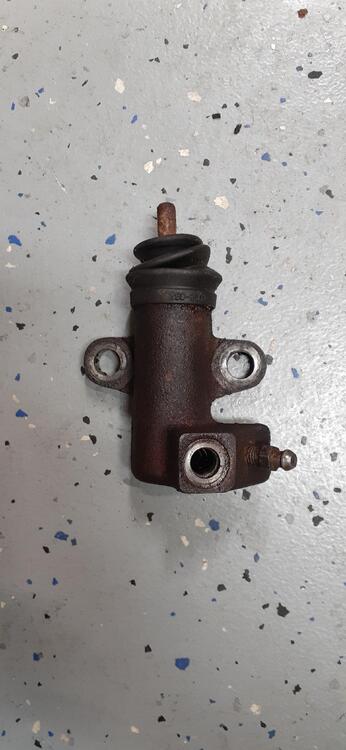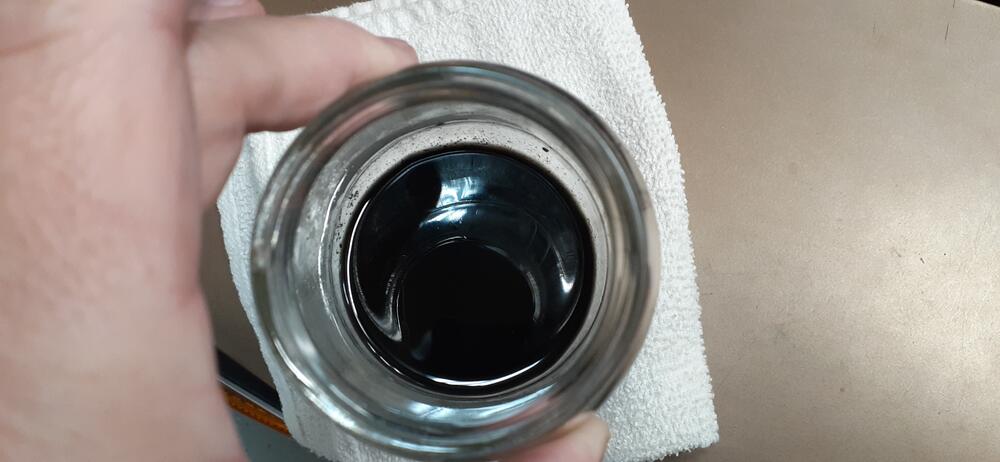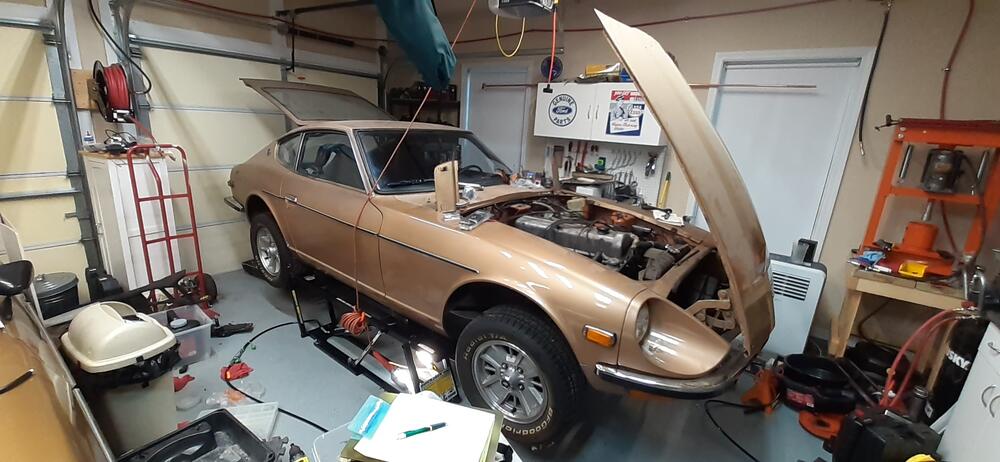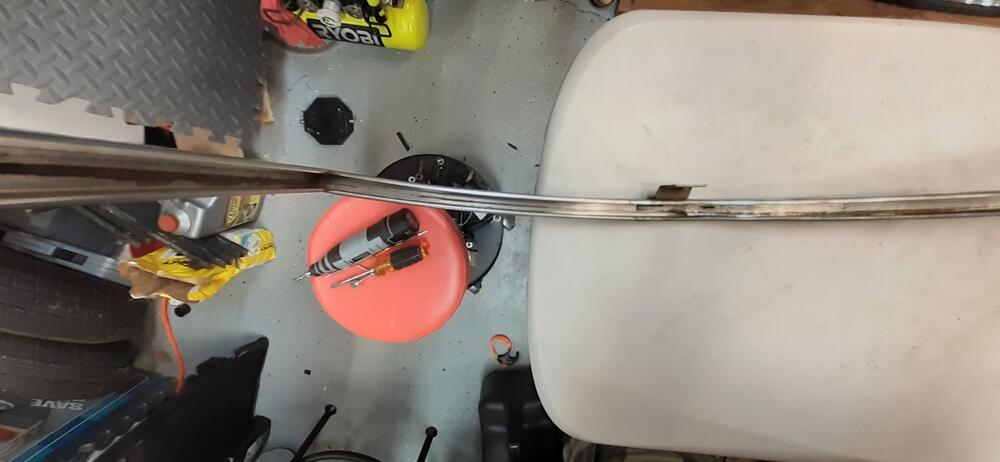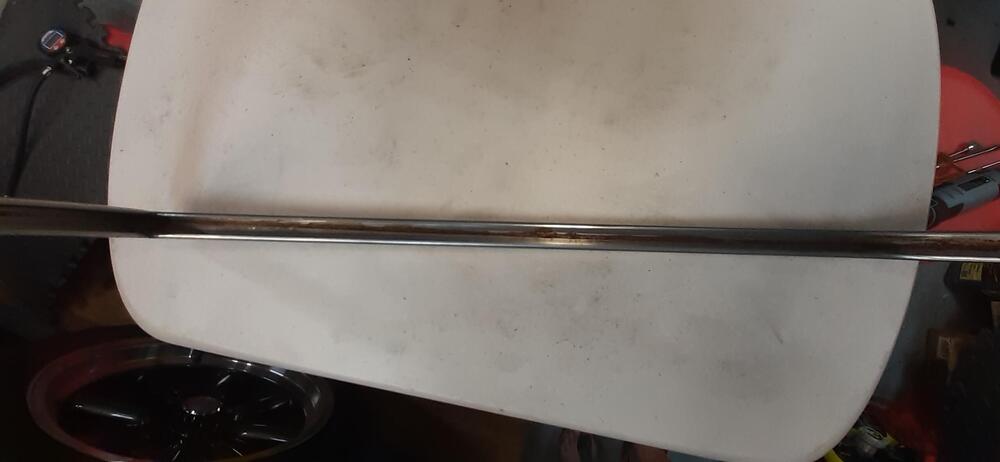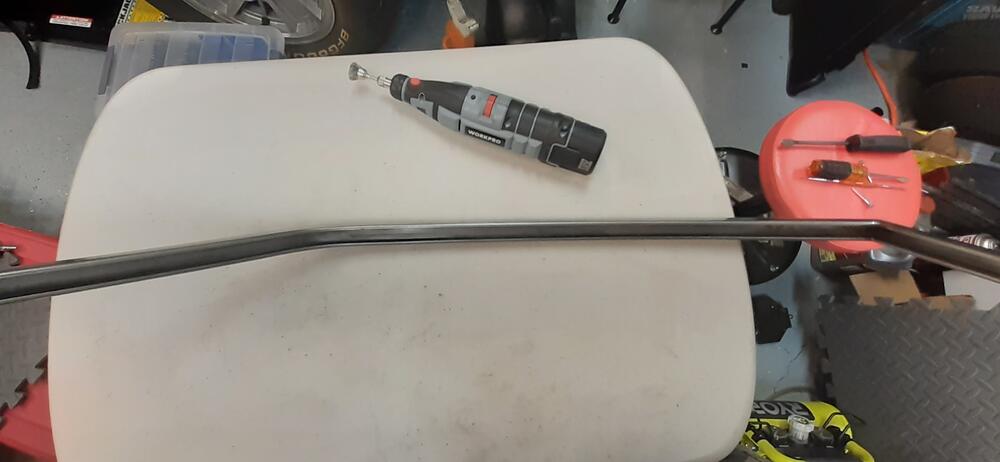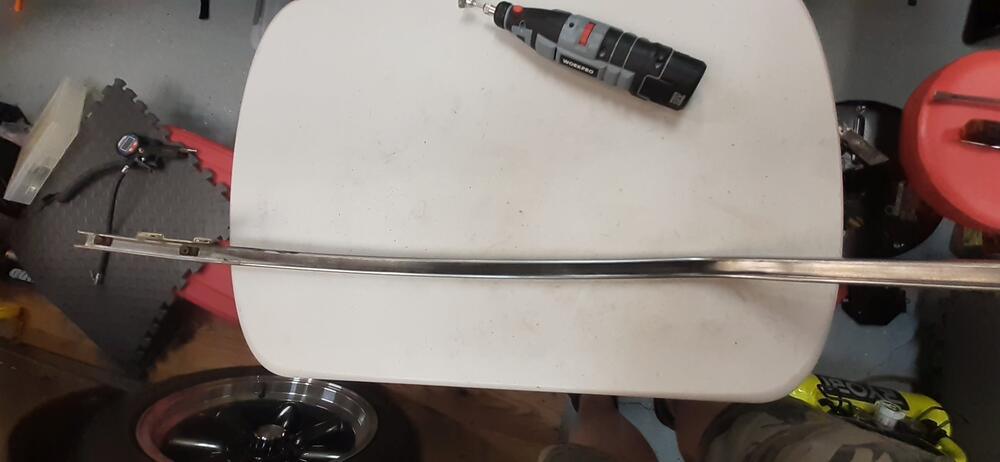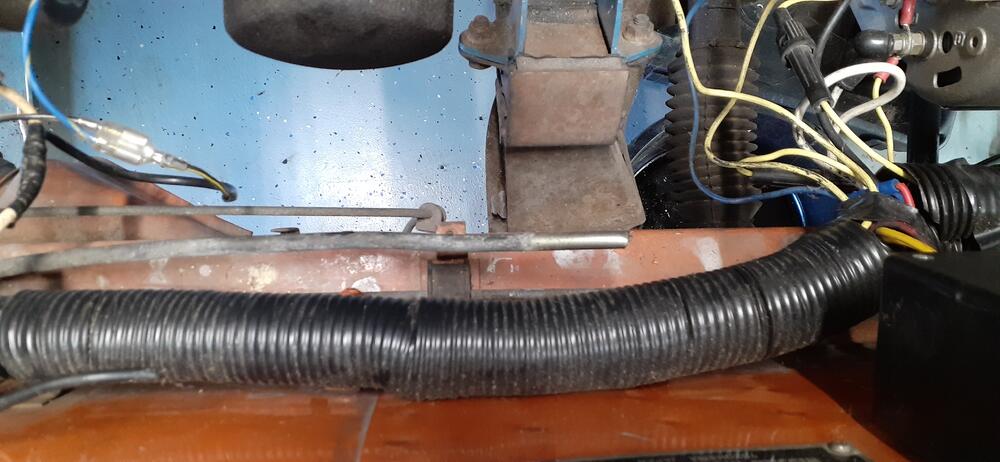SteveJ
Free Member
-
Joined
-
Last visited
-
Currently
Viewing Profile: MarceloFA
Everything posted by SteveJ
-
help identifying
Yeah, about the only time I've seen them on a Z is for a concours level restoration.
-
help identifying
-
help identifying
Year? Have you looked through the EC section of the FSM? Have you downloaded the FSM? The link is in my signature.
-
Z's on BAT and other places collection
@Tweeds never said more than one person was involved...
-
Z's on BAT and other places collection
I would think more along the lines of it being damaged and owned by someone with a small budget. Maybe a tree fell on the hatch/rear panel. Owner: "Dang it! A tree hit my car. Can you fix it?" Body Shop: "Yeah, but it will cost $5,000" Owner: "No thanks. The car's only worth about $1,500. Let me find some sheet metal and junk parts and see what I can do with it."
-
air cleaner housing connections
You are correct. That's not unusual. https://www.classiczcars.com/forums/topic/63655-source-for-the-cup-washers-on-the-su-air-cleaner-wing-bolts/?&page=2#comments
-
Getting the 73 Back on the Road
I received the master and slave cylinders today, so I decided that would be on this evening's agenda. I used my master cylinder fluid removal tool, known colloquially as a turkey baster, to remove the remaining fluid from the clutch master. The fluid was approaching vantablack in coloration, though it was still reflecting some light. I then decided to move to replace the slave cylinder. I put the car up in the air with the Quickjacks. I can't say enough good things about them. I slid under the car to evaluate the task at hand. I grabbed my wrenches and bleeder bottle and set about trying to pull any fluid through that I could coax out. Of course, none came out because no one was depressing the clutch pedal. Okay, so then I broke the connection loose at the soft hose. For this, the 17 mm banjo wrench I grabbed could not get a good grip on the nut on the hose. Fortunately, I managed to use a conventional open-ended wrench without rounding off anything. The bolts holding the slave to the transmission did not put up a fight, and soon I was able to remove the old, grungy slave cylinder. It was on there for 27 years, but I did not drive the car very often since 2002, and none at all since 2010. However, brake fluid is not too kind over the years, especially when it is probably the same fluid that was put in 27 years ago. Assembly was the opposite of disassembly. (Thank you, Haynes manual.) It was a little tricky to get the slave lined up over the bolt holes in the transmission, but that's more a function of a shoulder punished by years of American football and rugby. With the slave cylinder in place, it was time to go after the master cylinder. With the car up in the air, it was pretty easy to tackle this. I broke the hydraulic line free, removed the clevis pin from the pedal, and removed the two nuts holding the master in place. I adjusted the arm in the new master to match, got fork in the arm in place around the pedal, and replaced the nuts. Next came replacing the hydraulic line, and I finished off with reinstalling the clevis pin. I'll get the wife to help me with bleeding the clutch on Saturday morning when the temperature in the garage will be more to her liking. The nice thing is that I got another thing crossed off the list without adding anything more to the list.
-
Getting the 73 Back on the Road
To be honest, I didn't vocalize the "Vroom! Vroom!", but it was definite loud inside my head.
-
Getting the 73 Back on the Road
With a helping hand from my wife, I got the new window channel glued into the window frames. The fit is good, not great, but that's fine with me. I reinstalled the window frames and buttoned the doors back up. There are fewer and fewer straggler parts lying about in the garage. After I was finished with the doors, I got in the car with the windows rolled up. It was blissfully quiet in the cabin. I situated myself into a nice driving position to get the feel of how it will be after the motor is back running, and I pressed on the clutch pedal to feel ABSOLUTELY no resistance. D'oh! A new master and slave are now on order. They were added to my task list, too. I'm thinking that the first attempt for engine start will be this weekend. Keep your fingers crossed for me.
-
Ignition switch
From ZCarDepot.com: You might as well get the other switch. Also fix the wiring before you burn up the car. Vintage Connections has a 6 pin connector that will work.
-
1971 240Z Tachometer Wiring Problem
To piggy back on @Captain Obvious's post... The white/red wire goes to the ignition switch and is connected to the black/white wire coming out of the ignition switch when the key is in the ON position. The black/white wire travels down the dash harness to the engine harness. As you noticed, there are 3 black/white wires at the dash harness/engine harness interface. 6-wire connector - Also has a green/white wire. 4-wire connector 3-wire connector - I believe that is the switched source for the voltage regulator. My 73 has a different harness, so I can't help you with tracking down the connector directly. What you could do is disconnect both the 6-wire and 4-wire connectors. On the engine harness side, measure resistance between the black/white and green/white wires. The black/white that has low resistance (3 ohm or so) with the green/white wire is the one that connects to the ignition switch. Anyway, the black/white wire travels out to the ballast resistor, and there is the green/white wire on the other side of the resistor. (Do you see why I suggested checking for resistance on the engine harness side?) The green/white wire travels to the tachometer and comes out black/white. The black/white wire goes back through the dash harness, to the engine harness, and on to the positive terminal of the coil. I hope this helps.
-
1971 240Z Tachometer Wiring Problem
When I hover over the icon, "jeffsnook recently joined" pops up.
-
Restoration profit
Ha! I've got you beat by a country mile. Before I reinstalled the seats in the 73, I lifted up a mat under the passenger seat and found a 1972 quarter and a 1960 penny. Both were likely there before I bought the car in 1993.
-
Getting the 73 Back on the Road
Speaking of comfort, it's good to reduce wind noise. The window channel rubber/felt was in two conditions: missing and rotten. I pulled the window frames out and worked on prepping them for new channel rubber/felt that I purchased from ebay. In case anybody is curious, here is the listing: https://www.ebay.com/itm/272740934276. Even though the seller is in Thailand, it only took just over 2 weeks to arrive. I can't complain about that. I dug out the rotten channel rubber from the driver side and used a dremel with a wire brush to remove the remaining adhesive. There was more of the rotten channel rubber in the passenger side frame plus some of the thick felt at the bottom of the back part of the channel. There was also more adhesive residue. For that I started with a narrow gasket scraper, and I finished up with the dremel and wire brush. I took measurements of the frame to prep the window channel length and finished up by cleaning out the inside of the frames with denatured alcohol. Tomorrow I will cut the window channel to length, apply a thin coat of adhesive to the frame and work the window channel into place. Here are some before and after photos of cleaning out the old adhesive from the passenger side frame. Before: After:
-
Putting in a replacement L-28
Wait! There's an end point?
-
SU Troubleshooting. Case Study
Thanks for sharing that. It's a good thing to add to the memory banks. That's similar to what I dealt with recently. I tuned a friend's 72, set the floats higher, etc., but the car wouldn't run worth a damn. Another friend messed with the dwell, and the car ran better for a short while. The first friend had me check the car again, and I told him it had to be the ignition. When I finally installed the Pertronix, that car ran like a scalded dog. It was another matter of having fixed everything else, what is left to mess with?
- 73' 240z ballast resistor removal
-
73' 240z ballast resistor removal
Yes, I bypassed the resistor in my 260Z that has a ZX distributor. I have done the same in my 73 with a Pertronix, though I haven't fired it up since I put in the Pertronix.
-
73' 240z ballast resistor removal
Connect them together.
-
Getting the 73 Back on the Road
Fortunately Jim, this will be more of a comfortable Ratsun than a show car.
-
Getting the 73 Back on the Road
It's the weekend, so progress was good. I bypassed the electric fuel pump for now. I took off the old hoses in the back and had the wife blast air through the lines in the engine bay. There were no signs of blockages. As a matter of fact, there was still old, stinky gas in the supply line. Then I went to replace the hoses in the engine bay. I noticed a while back that one of the blocks that holds the fuel lines in place was damaged. When I removed the hose from the supply line to the fuel filter, I found this. I'm not sure why someone would cut off the fuel line like that. Anyway, the new fuel hoses are in place. Next up: Get a new battery. Remove the valve cover and pour some oil over the cam. Remove the spark plugs and put some oil in the cylinders. Turn the engine to circulate the oil. Add some gas to the fuel pump, carbs and gas tank. Attempt to start.
-
Car won’t turn off
It should have, but diodes can fail, or someone could have installed the diode backwards. If you have an ohmmeter, I can tell you how to test the plug later. Right now it's time to work on my car.
-
Car won’t turn off
Has the alternator ever been changed out for an internally regulated alternator? The lamp (switched) wire can backfeed into the ignition. The solution is to use a diode in the alternator circuit on the appropriate wire to prevent the backfeeding from the alternator to the ignition circuit. http://www.zhome.com/ZCMnL/tech/280Alt.html
-
Getting the 73 Back on the Road
Short update today. Yesterday I replaced the bad air cylinder on the Quickjack. It was a fairly easy task. Today I drained the gas tank. First I siphoned about 4.5 gallons out via the filler neck. There was some junk in the gas that came out, but not too bad. The gas wasn't too much darker than what you get from the pump. I then deployed the Quickjacks to finish draining the tank via the drainplug. I got another 4.5 gallons that way. There was less junk than I got from siphoning the tank. The gas smelled bad, but again, it wasn't too dark. Tomorrow, I'll blow some compressed air through the hard lines in the fuel system, remove the electric fuel pump in the back, and replace the fuel hoses. They have been on there for over 25 years now.
-
1977 280z "Fuel" warning light always on
The full story helps. Bench test per @Dave WM's instructions. Could a previous owner have changed the bulb?








